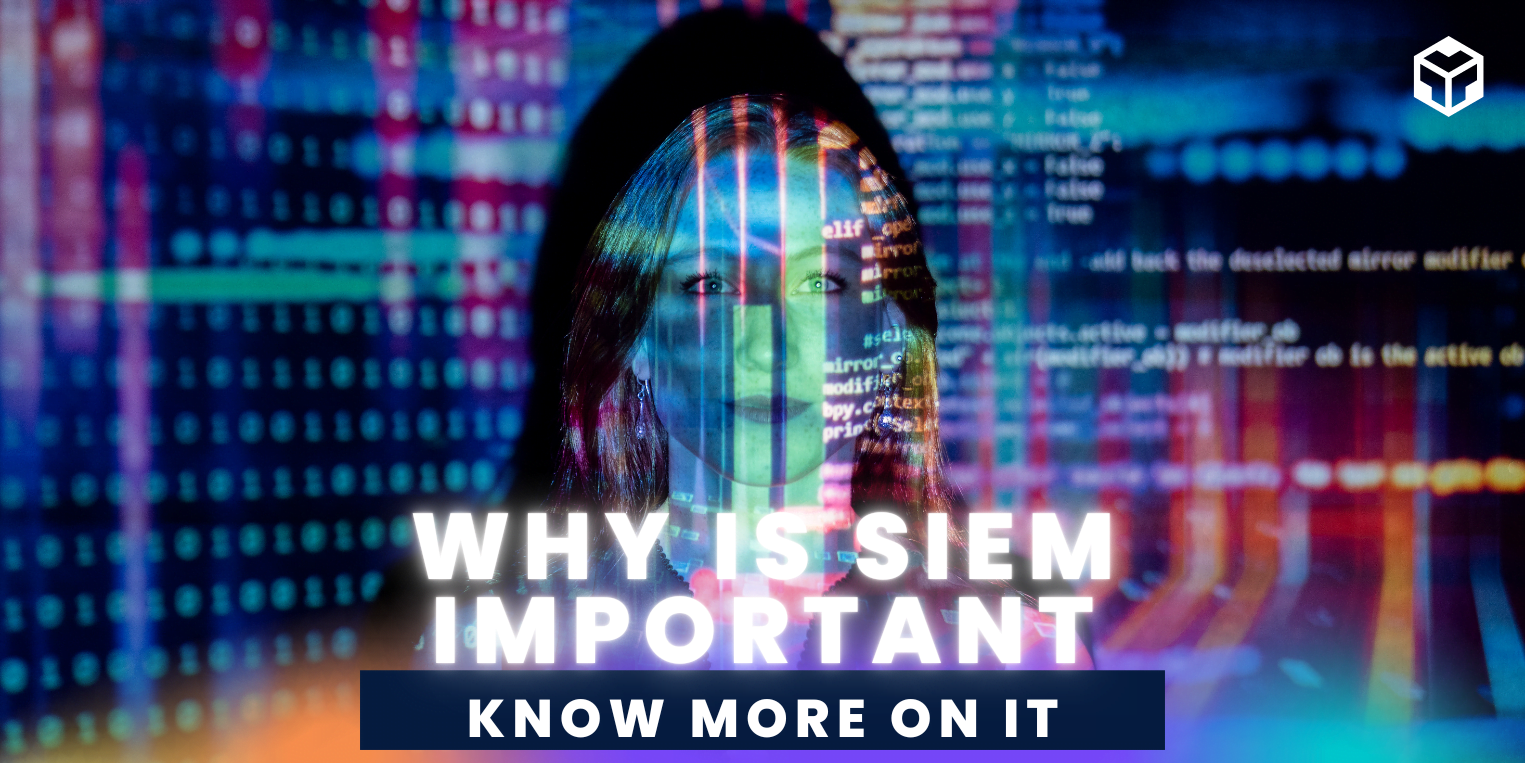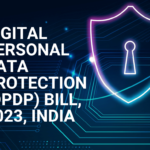Why is SIEM important?
SIEM is critical because it provides a centralized platform for security event management and correlation. This allows organizations to detect and respond to security threats more effectively.
Organizations use SIEM to compliance with various regulations, such as the Sarbanes-Oxley Act. SIEM also used to monitor internal activity to prevent data leaks and unauthorized access to sensitive data.
History of SIEM
The history of SIEM traced back to the early days of mainframe computing. In those days, system administrators used a variety of tools to monitor and manage their systems. One of these tools called a System Information and Event Monitor (SIEM). SIEM originally developed by IBM to help system administrators monitor and manage their systems more effectively.
In the early days of SIEM, the focus was on providing a central repository for system information and events. This allowed administrators to identify and troubleshoot problems more easily. As SIEM evolved, it began to focus more on security and compliance. SIEM became an essential tool for organizations to compliance with various regulations, such as the Sarbanes-Oxley Act.
Today, SIEM is an essential tool for any organization that wants to ensure the security of its IT infrastructure. SIEM provides a centralized platform for security event management and correlation. This allows organizations to detect and respond to security threats more effectively.
How does SIEM work?
SIEM works by collecting data from a variety of sources, such as log files, network traffic, and user activity. This data then analyzed to seek patterns that may indicate a security threat. When a potential threat identified, SIEM can act to mitigate the threat.
What are the benefits of SIEM?
SIEM provides several benefits, including:
Improved security: SIEM can help organizations improve their security posture by providing a centralized platform for security event management and correlation. This allows organizations to detect and respond to security threats more effectively.
Compliance: SIEM can help organizations in compliance with various regulations, such as the Sarbanes-Oxley Act.
Monitoring: SIEM can help organizations monitor internal activity to prevent data leaks and unauthorized access to sensitive data.
What are the challenges of SIEM?
SIEM can be complex and costly to implement and manage. Additionally, SIEM requires a high level of expertise to configure and maintain.
Why is SIEM important?
SIEM is essential because it provides a centralized platform for security event management and correlation. This allows organizations to detect and respond to security threats more effectively.
Organizations use SIEM to compliance with various regulations, such as the Sarbanes-Oxley Act. SIEM also used to monitor internal activity to prevent data leaks and unauthorized access to sensitive data.
The benefits of SIEM
There are many benefits to using SIEM within an organization. SIEM can help with security, compliance, and monitoring.
Some benefits of SIEM are:
— It can help organizations improve their security posture by providing a centralized platform for security event management and correlation. This allows organizations to detect and respond to security threats more effectively.
— It can help organizations in compliance with various regulations, such as the Sarbanes-Oxley Act.
— It can help organizations monitor internal activity to prevent data leaks and unauthorized access to sensitive data.
Limitations of SIEM
There are a few limitations when it comes to SIEM. These limitations can include the cost of SIEM, the level of expertise needed to configure and maintain it, and the complexity of SIEM.
Tools and features involved in a SIEM solution
There are many tools and features involved in a SIEM solution. Some of these tools and features can include data collection, data analysis, event management, and incident response.
There are many SIEM tools and software available on the market. Some of these tools and software can include Securonix, Splunk, LogRhythm, and IBM QRadar.
Securonix SIEM & SOAR Solutions
Securonix is a leading provider of SIEM and SOAR solutions. Securonix SIEM solutions offer a comprehensive platform for security event management and correlation. Securonix SOAR solutions provide a complete solution for incident response and threat management.
Splunk Enterprise Security
Splunk Enterprise Security is a SIEM solution that offers a comprehensive platform for security event management and correlation. Splunk Enterprise Security includes many features, such as data collection, data analysis, event management, and incident response.
LogRhythm NextGen SIEM Platform
LogRhythm is a leading provider of SIEM solutions. LogRhythm NextGen SIEM Platform offers a comprehensive platform for security event management and correlation. LogRhythm NextGen SIEM Platform includes several features, such as data collection, data analysis, event management, and incident response.
IBM QRadar SIEM
IBM QRadar SIEM is a leading provider of SIEM solutions. IBM QRadar SIEM offers a comprehensive platform for security event management and correlation. IBM QRadar SIEM includes many features, such as data collection, data analysis, event management, and incident response.
SIEM implementation best practices
There are a few best practices that should be followed when implementing SIEM within an organization. These best practices can include properly sizing the environment, deploying SIEM in a tiered architecture, and using a central logging solution.
Properly sizing the environment
When implementing SIEM, it is important to properly size the environment. This means that the environment should be sized to meet the needs of the organization.
Deploying SIEM in a tiered architecture
When deploying SIEM, it is significant to deploy SIEM in a tiered architecture. This means that SIEM should be deployed in a way that allows for scalability and flexibility.
Using a central logging solution
When using SIEM, it is significant to use a central logging solution. This allows for easier management and analysis of log data.
What the future holds for SIEM
The future of SIEM looks promising. SIEM is constantly evolving and becoming more sophisticated. SIEM will continue to be an essential tool for organizations to ensure the security of their IT infrastructure.
Related solutions of SIEM
There are a few related solutions to SIEM. These solutions can include log management, security information and event management (SIEM), and security orchestration, automation, and response (SOAR).
Securonix SIEM & SOAR Resources
— https://www.securonix.com/
— https://www.securonix.com/blog/
— https://www.securonix.com/resources/
Splunk Enterprise Security Resources
— https://www.splunk.com/en_us/software/splunk-enterprise-security.html
— https://www.splunk.com/en_us/blog/enterprise-security.html
— https://www.splunk.com/en_us/resources/enterprise-security.html
LogRhythm NextGen SIEM Platform Resources
— https://www.logrhythm.com/
— https://www.logrhythm.com/blog/
— https://www.logrhythm.com/resources/
IBM QRadar SIEM Resources
— https://www.ibm.com/security/qradar
— https://www.ibm.com/security/blog/qradar
— https://www.ibm.com/security/resources/qradar
Few more Q&A
What SIEM means?
SIEM stands for Security Information and Event Management. It is a type of security software that collects and analyses data from various sources to provide visibility into the security of an organization. SIEM can be used to detect threats, investigate incidents, and comply with regulations.
What is the main purpose of SIEM?
The main purpose of SIEM is to provide visibility into the security of an organization. It can be used to detect threats, investigate incidents, and comply with regulations.
What is an example of a SIEM?
An example of a SIEM is Securonix or Splunk Enterprise Security.
What is SIEM process?
The SIEM process typically consists of the following steps:
1. Data collection: Data is collected from various sources, such as logs, network traffic, and security devices.
2. Data normalization: The collected data is normalized so that it can be easily analysed.
3. Data analysis: The normalized data is analysed to detect threats, investigate incidents, and comply with regulations.
4. Reporting: The results of the analysis are reported to the appropriate stakeholders.
What are SIEM tools?
SIEM tools are software that helps organizations to collect, normalize, and analyse data from various sources. SIEM tools can be used to detect threats, investigate incidents, and comply with regulations.
What are the benefits of SIEM?
The benefits of SIEM include the following:
1. Increased visibility into the security of an organization.
2. The ability to detect threats, investigate incidents, and comply with regulations.
3. Reduced costs associated with security incidents.
4. Improved efficiency in incident response.
What are the features of SIEM?
The features of SIEM vary depending on the specific tool, but some common features include the following:
1. Data collection: SIEM tools typically collect data from various sources, such as logs, network traffic, and security devices.
2. Data normalization: SIEM tools typically normalize the collected data so that it can be easily analysed.
3. Data analysis: SIEM tools typically provide the ability to analyse the normalized data to detect threats, investigate incidents, and comply with regulations.
4. Reporting: SIEM tools typically provide the ability to report the results of the analysis to the appropriate stakeholders.
Is SIEM a vulnerability management?
No, SIEM is not a vulnerability management tool. SIEM is a security software that helps organizations to collect, normalize, and analyse data from various sources.
What is the value of a SIEM?
The value of a SIEM depends on the specific needs of the organization. However, some benefits of SIEM include the ability to detect threats, investigate incidents, and comply with regulations.
What are the different steps of the SIEM process?
The SIEM process typically consists of the following steps:
1. Data collection: Data is collected from various sources, such as logs, network traffic, and security devices.
2. Data normalization: The collected data is normalized so that it can be easily analysed.
3. Data analysis: The normalized data analysed to detect threats, investigate incidents, and comply with regulations.
4. Reporting: The results of the analysis are reported to the appropriate stakeholders.
What devices does SIEM monitor?
SIEM typically monitors devices such as logs, network traffic, and security devices.
What is the difference between SIEM and SOC?
SIEM is a security software that helps organizations to collect, normalize, and analyse data from various sources. SOC, on the other hand, is a team of security analysts who monitor and respond to security incidents.
What is SIEM and soar?
SOAR is an acronym for security orchestration, automation, and response. SIEM is a security software that helps organizations to collect, normalize, and analyse data from various sources.
What is the SIEM process flow?
The SIEM process typically consists of the following steps:
1. Data collection: Data is collected from various sources, such as logs, network traffic, and security devices.
2. Data normalization: The collected data is normalized so that it can be easily analysed.
3. Data analysis: The normalized data analysed to detect threats, investigate incidents, and comply with regulations.
4. Reporting: The results of the analysis are reported to the appropriate stakeholders.
What is the SOAR process flow?
The SOAR process typically consists of the following steps:
1. Identification: A security incident is identified.
2. Triage: The security incident triaged to determine the severity and scope.
3. Investigation: The security incident is investigated to gather information and evidence.
4. Response: The security incident responded to contain and mitigate the damage.
5. Recovery: The organization is recovered from the security incident.
6. Lessons learned: The organization learns from the security incident and takes steps to prevent future incidents.
What is SIEM in SOC?
SIEM is a security software that helps organizations to collect, normalize, and analyse data from various sources. SOC, on the other hand, is a team of security analysts who monitor and respond to security incidents.
Is SIEM automated?
Yes, SIEM is an automated process.
What is the difference between SIEM and log management?
SIEM is a security software that helps organizations to collect, normalize, and analyse data from various sources. Log management, on the other hand, is the process of collecting, storing, and analysing log data.
What problem SIEM solves?
SIEM provides visibility into the security of an organization. It can be used to detect threats, investigate incidents, and comply with regulations.
What are the SOAR tools?
Soar tools are software that helps organizations to automate and orchestrate the security incident response process.
Why SOAR is required?
SOAR is required to improve the efficiency and effectiveness of the security incident response process.
How SOAR works?
Soar works by automating and orchestrating the security incident response process.
What is a SOC in security?
A SOC is a team of security analysts who monitor and respond to security incidents.
What is EDR tool?
EDR is an acronym for endpoint detection and response. EDR tools are security software that helps organizations to detect and respond to security incidents at the endpoint level.
Is EDR a firewall?
No, EDR is not a firewall. EDR is a security software that helps organizations to detect and
respond to security incidents at the endpoint level.
Which EDR is best?
There is no one “best” EDR tool. The best EDR tool for an organization depends on the specific needs of the organization.
What is the difference between EDR and SIEM?
EDR is a security software that helps organizations to detect and respond to security incidents at the endpoint level. SIEM, on the other hand, is a security software that helps organizations to collect, normalize, and analyse data from various sources.
Is SIEM endpoint security?
No, SIEM is not endpoint security. SIEM is a security software that helps organizations to collect, normalize, and analyse data from various sources.
Is SIEM an XDR?
No, SIEM is not an XDR. SIEM is a security software that helps organizations to collect, normalize, and analyse data from various sources.
Is EDR part of SIEM?
No, EDR is not part of SIEM. EDR is a security software that helps organizations to detect and respond to security incidents at the endpoint level.
What is the difference between SIEM and MDR?
SIEM is a security software that helps organizations to collect, normalize, and analyse data from various sources. MDR, on the other hand, is a type of security service that provides 24/7 monitoring and response to security incidents.
What is the difference between XDR and EDR?
XDR is a security software that helps organizations to detect and respond to security incidents across multiple data sources. EDR, on the other hand, is a security software that helps organizations to detect and respond to security incidents at the endpoint level.
What is XDR in cybersecurity?
XDR is a security software that helps organizations to detect and respond to security incidents across multiple data sources.
Why is XDR required?
XDR is required to improve the visibility and efficiency of the security incident response process.
How does XDR work?
XDR works by collecting data from multiple data sources and then using that data to detect and respond to security incidents.
What is the difference between XDR and SIEM?
XDR is a security software that helps organizations to detect and respond to security incidents across multiple data sources. SIEM, on the other hand, is a security software that helps organizations to collect, normalize, and analyse data from various sources.
What is an endpoint in IT?
An endpoint is a device that is connected to a network.
What is an API URL?
API stands for application programming interface. An API URL is a type of URL that is used to access an API.
What is the difference between API and endpoint?
API is an acronym for application programming interface. An endpoint is a device that is connected to a network.
What is the difference between URL and endpoint?
A URL is a type of address that is used to access a resource on the internet. An endpoint is a device that is connected to a network.
What is an API call?
An API call is a type of request that is made to an API.
What is REST API example?
REST is an acronym for representational state transfer. A REST API is an example of a type of API that uses the REST architecture.
What are the API methods?
The API methods are the methods that are used to access an API.
What are the 3 types of APIs?
There are three types of APIs: public, private, and partner.
What is a public API?
A public API is an API that is publicly available to anyone who wants to use it.
What is a private API?
A private API is an API that is only available to the organization that owns it.
What is a partner API?
A partner API is an API that is available to a select group of partner organizations.
What are 2 types of APIs?
There are two types of APIs: web APIs and mobile APIs.
What is a web API?
A web API is an API that can be accessed using a web browser.
What is a mobile API?
A mobile API is an API that can be accessed using a mobile device.
What are the 8 methods of HTTP?
The 8 methods of HTTP are: GET, POST, PUT, PATCH, DELETE, OPTIONS, HEAD, and TRACE.






